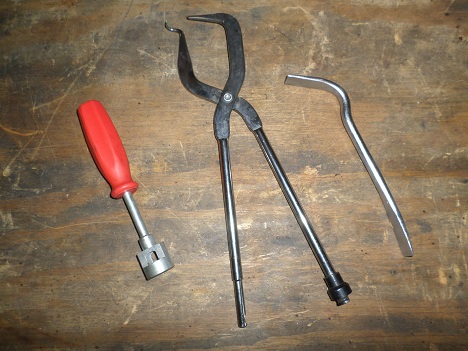Best Old Trucks To Restore
With few exceptions (like 1950's Dodge Sweptside and Chevy Cameo Carrier), old trucks are easier to restore than old cars. They're simpler in design, have less parts, and since most manufacturers kept truck models the same for many years, parts are usually easier to find and cheaper to buy than classic car parts. Old trucks also have less costly trim pieces, particularly chrome.
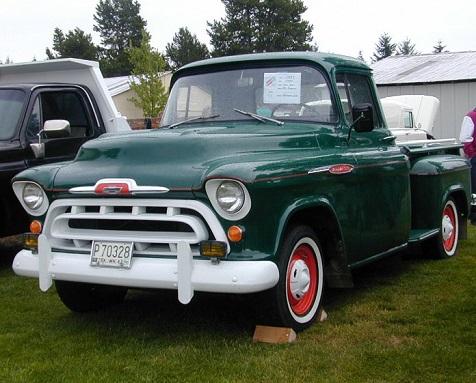
Another advantage of restoring an old truck versus an old car is, you probably don't need nor want it to be in show-quality condition. Usually, presentable and running is good enough to take it to the home improvement store, local supermarket, classic car cruise, or Sunday morning Cars and Coffee gathering.
Simply put, old trucks are more functional than old cars, as they were designed to be utility vehicles. If you're looking to restore an old truck, consider these various makes and models for a fun, driver-quality restoration.
2WD vs 4WD
Four-wheel-drive trucks have advantages, like driving in snow and going off-road. But most of the time it's not needed, and 4WD trucks do require more maintenance. They also give worse gas mileage, and in most cases a worse ride. On the plus side, they generally have a higher resale value.
____________________________________________
____________________________________________
For the average enthusiast, a two-wheel-drive truck will be satisfactory. So unless you're planning on off-roading with your classic truck, a 2WD pickup would be an easier restoration choice.
Which Old Truck Is Best To Restore?
In my neck of the woods (North Carolina) there's plenty of old trucks still around. The ones that come up for sale are usually beat up and in need of work, but they're affordable.
In no particular order, here is my list of the twelve best candidates for driver-quality classic truck restoration.
**********************
Ford F-Series (1953-1956)
One of the most popular classic American trucks continues to be the second-generation Ford F-Series pickup series.
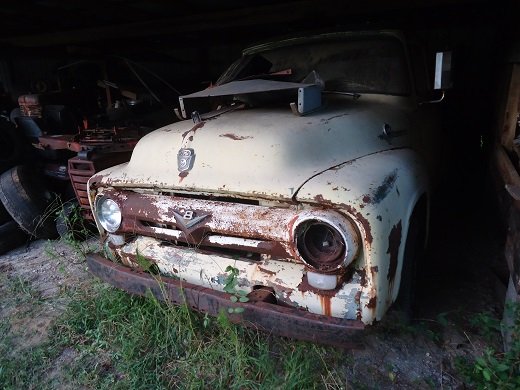
After 60 years, you still see early F-series trucks on the road. These are perfect candidates for a driver-quality restoration.
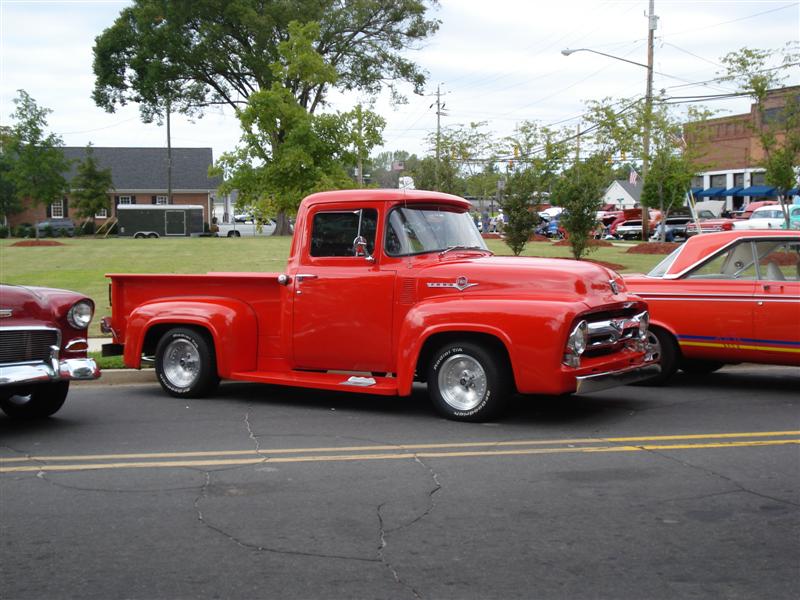
PLUS: Easy to work on, full-frame vehicle, swap in whatever motor you like. Almost everything you need is available, and you can add upgrades like A/C, air-ride, brake upgrades, etc. Or you can just keep it stock. There's nothing cooler than popping open your hood to show off your flathead Ford V8.
MINUS: Finished versions are pricey, but unrestored examples are still out there. Although project-quality trucks are affordable, consider the amount of work you'll need to put into a 60+ year-old truck. Virtually everything will need to be gone over; suspension, brakes, drivetrain, just to get it road-worthy.
____________________________________________
____________________________________________
Chevrolet "Task Force" Trucks (1955-1959)
The Task Force series of trucks was quite a departure from Chevrolet's existing line of pickups. Smooth, rounded sheet-metal replaced the old pontoon-style fenders. Large wrap-around windshield glass offered better visibility and gave a more contemporary look. And under the hood, Chevy's new small-block V8 was available.
PLUS: Easy to work on, full-frame vehicle, swap in whatever motor you like, and they already have 12-volt electrics. These trucks have lasted over 60 years, and with today's coatings and rust-preventatives, they can last another 60 years.
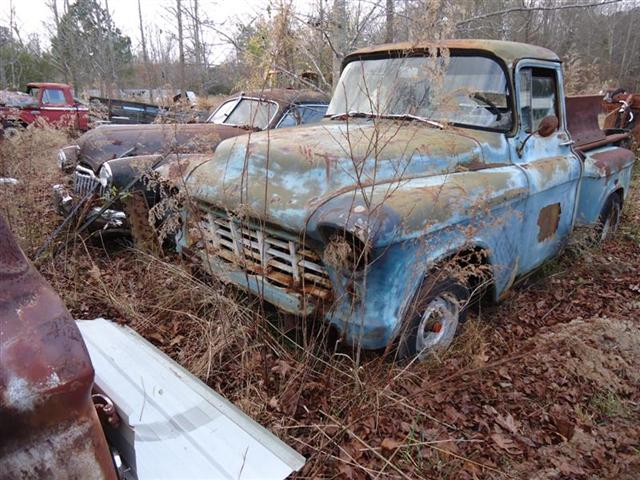
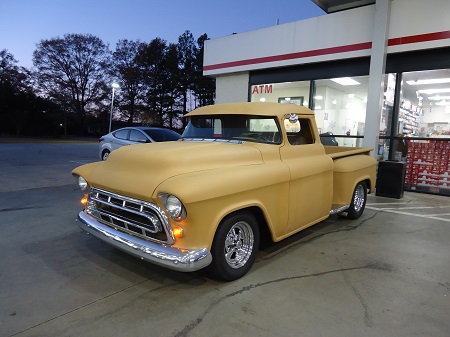
MINUS: Restored 1950s Chevy pickups command top dollar in today's old car market, making them unobtainable for most of us. If you buy one as a non-running project, remember that everything will need to be gone over to make it safely driveable; suspension, brakes, drivetrain, etc.
____________________________________________
____________________________________________
1946-1968 Dodge Power Wagon
Originally built for the military during World-War-Two, the Dodge Power Wagon is a rolling workhorse. They were designed for off-highway operations such as pulling, winching, snow-plowing, well-drilling, and providing portable power to remote areas.
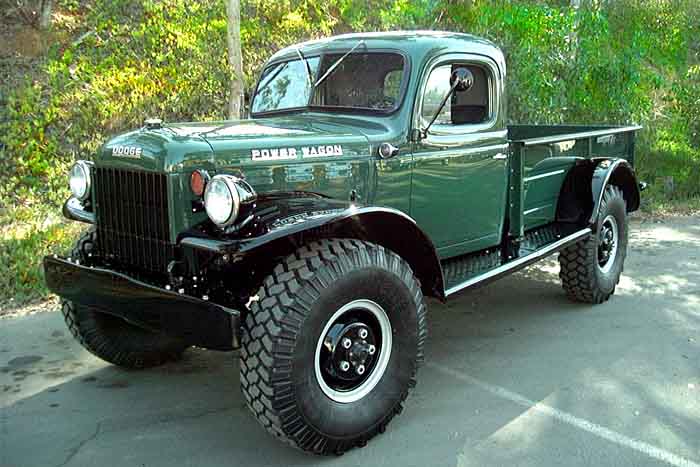
PLUS: Dodge Power Wagons helped the Allied forces win World War II, and were one of the first mass-produced 4x4 civilian trucks. You're restoring history with one of these trucks.
MINUS: You're working with technology from the 1940s, with a low-compression flathead engine and 6-volt electrical system. With super-low rear-axle gears, a vintage Power Wagon will climb a mountain, but not very quickly. At 40 mph, you've reached cruising speed. At 50 mph, your motor is tapped-out and screaming.
**********************
Third-Gen Chevy and GMC Pickups (1973-1987)
Chevrolet completely revamped their C/K truck series for 1973. The style would remain the same for 14 years on pickup models, and for 18 years on Chevy Blazers, Suburbans, and one-ton dual wheel pickups. With such a long production cycle, millions of these trucks were sold, which give you great aftermarket coverage and parts availability.
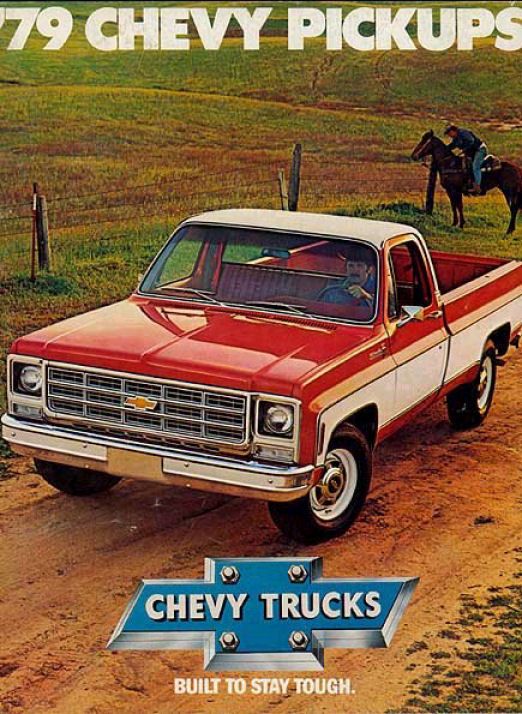
Third-generation Chevy and GMC trucks are modern enough to be comfortable, but classic enough to still catch looks. Although long-bed trucks are more practical (motorcycle hauling, etc.) short-bed trucks are more valuable.
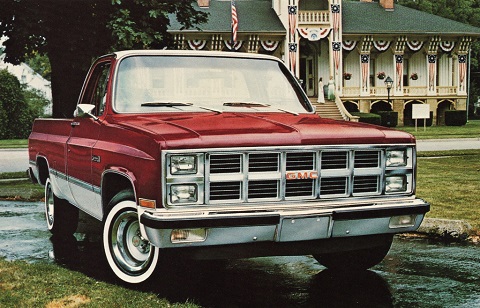
PLUS: All light-duty trucks were emission-exempt until 1978. This means early third-generation C/K trucks (1973-1977) have minimal or no emissions controls. In 1978, General Motors redesigned their truck frames to fit catalytic converters. So with early models you can easily run whatever motor you'd like.
MINUS: These trucks will never have the collector value of 1950s trucks, there were just too many made. So find a model with P/S, A/C, power windows, and enjoy.
**********************
Jeep Gladiator Pickup (1962-1988)
Sharing it's basic platform with the Jeep Wagoneer, the Gladiator pickup was built in various trim packages, along with a choice of 2WD or 4WD. Early models had an optional independent front suspension offered on 4WD Gladiators. The IFS design was built around a Dana 44 center section and proved to be troublesome, and the option was deleted in 1965.
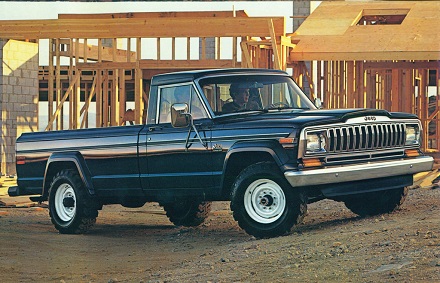
The Gladiator pickup was offered with Jeep's "Tornado" overhead-camshaft straight six motor. This was the first mass-produced U.S.-designed overhead cam engine, beating Pontiac’s Sprint OHC six to market by two years.
Dual rear wheels and winch-body were factory options.
____________________________________________
____________________________________________
The Gladiator name was dropped after 1971, after which the line was known simply as the Jeep pickup, or J-series. From 1974 through 1978, a 401ci motor was optional. This AMC V8 produced 225 horsepower and 320 lb/ft of torque.
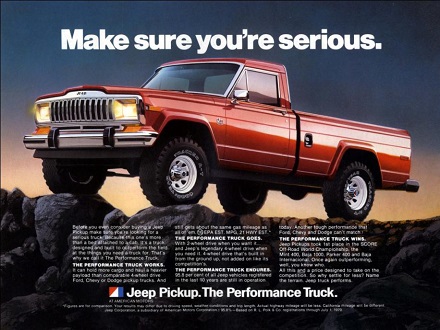
PLUS: Later models have 1980s creature comforts, like power windows and air conditioning. Find one with the 401 motor and you've got yourself one cool old truck.
MINUS: The 401 will give great torque but poor gas mileage, and good original examples may be hard to find.
**********************
Jeep CJ Series
From WW2 models of the 1940s to the CJ Jeeps of the 1980s, there's plenty to choose from here.
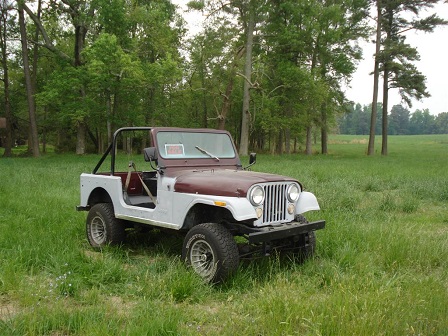
Restore An Old Jeep
CJ5 Engine Swap Choices
Willys Jeep Oil Filter Canister Installation
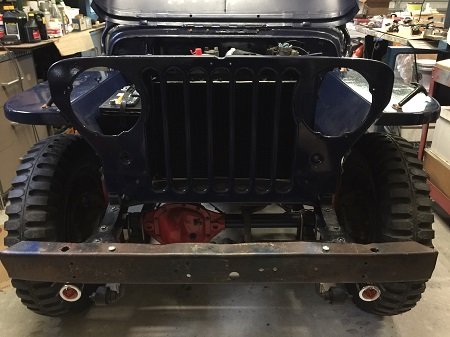
The Jeep CJ series was first produced by Willys, then Kaiser, followed by American Motors, and finally Chrysler. Changes from a 1940's military vehicle to a modern ride mostly came in small, yearly increments.
**********************
Cab-Over Pickup Trucks
Shorter, lighter, and easier to maneuver, cab-over pickups are often less expensive than full-size pickups. With cargo boxes measuring seven-plus feet, they're suitable for errands around town, local deliveries, or even moving some furniture!
In 1950, Volkswagen introduced the forward control, rear-engine Transporter, which arrived in America in 1954.
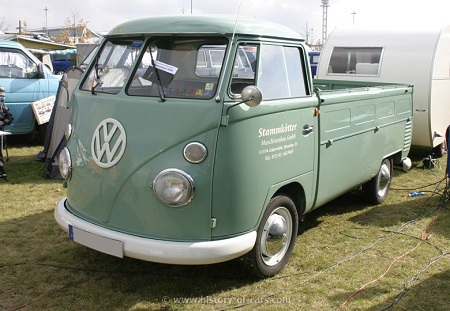
In 1957, the Willys-Overland company offered the 4-wheel-drive FC-150 and FC-170 cab-over pickups (the FC designation stood for forward control).
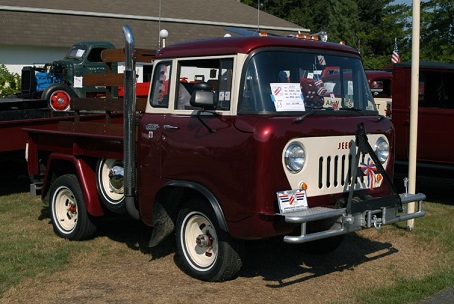
From 1961 through 1965, Chevy produced a Corvair van which could be ordered as a Loadside or Rampside pickup. The engine was mounted in the bed.
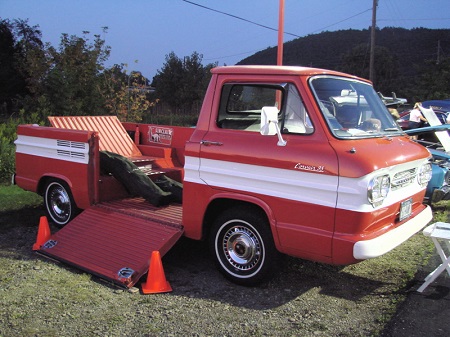
Ford debuted their new line of light-duty Econoline vans and pickups in 1961. Production ran until 1967.
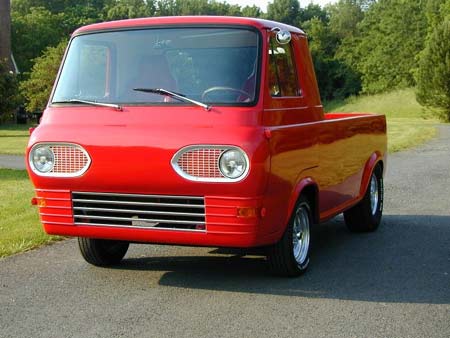
Dodge copied Ford's idea and offered the A100 cab-over pickup from 1964 through 1970. Whereas Ford never offered a V8 in their forward control pickup, Dodge did, a 318 producing 210-horsepower.
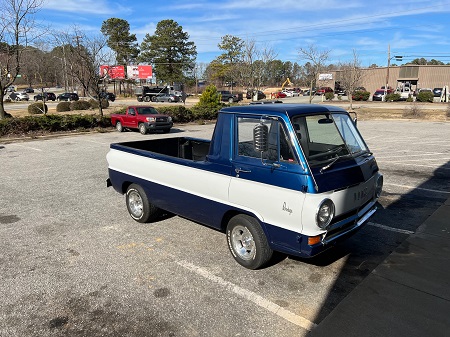
**********************
Divco Milk Truck
Although Divco made numerous commercial vehicles during their 64 years in business, the snub-nosed Model U milk truck and it's variants are certainly the most recognized. Spanning over four decades, tens of thousands of these trucks delivered fresh milk daily to a sprawling American suburbia.
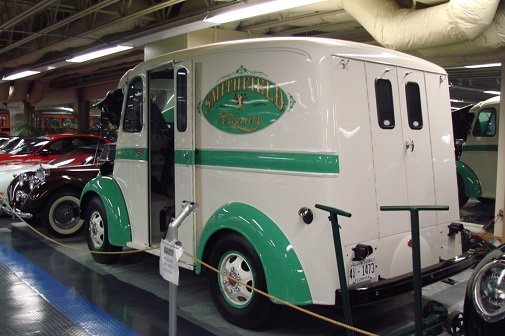
Restored Divco Milk Truck at Tallahassee Automotive Museum
Early examples were powered by a flathead Continental or Hercules engines. Mid-1960's and later Divco trucks had Ford engines, which are easier to find and easier to repair.
**********************
Aftermarket Upgrades
Are you willing to give up a creature comforts like power steering, air conditioning, and power windows? The good news is you don't have to! Almost every upgrade you can think of is available for classic trucks, including aftermarket A/C units and disc brake upgrades, just to name a few.
Conclusion
Although conventional pickups are by far the most common, there's plenty of other styles of old trucks to restore. There's also cab-over vans, flatbed farm trucks, winch tow-trucks, or how about a Good Humor Ice Cream truck? And early Chevy Suburbans and Ford Broncos have become quite popular (and valuable).
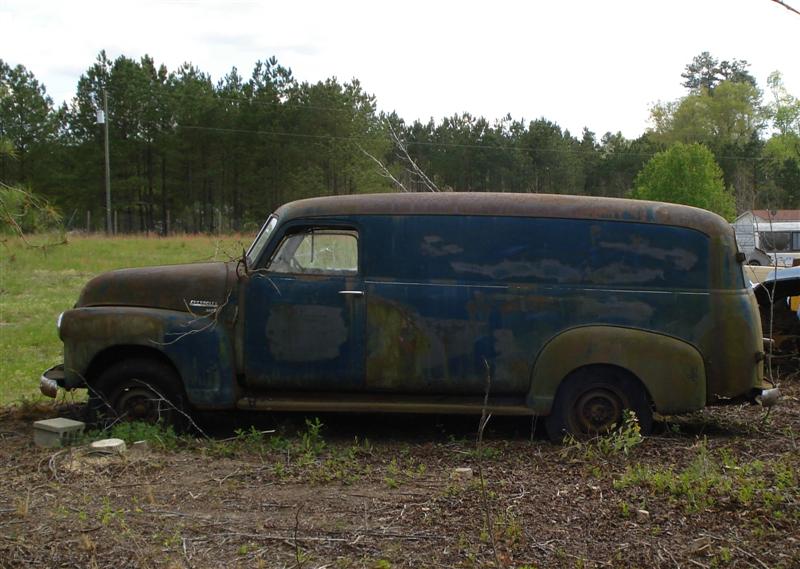
Having an old 1950's panel truck will give you free storage space!
**********************
Related Articles:
Engine Swap Basics
6-Volt to 12-Volt Conversion
Best Oil For Classic Cars
Battery Jump Pack Review
Tools Needed For Automotive Restoration
Wavian Metal Gas Can Review
